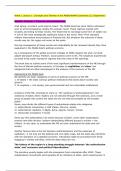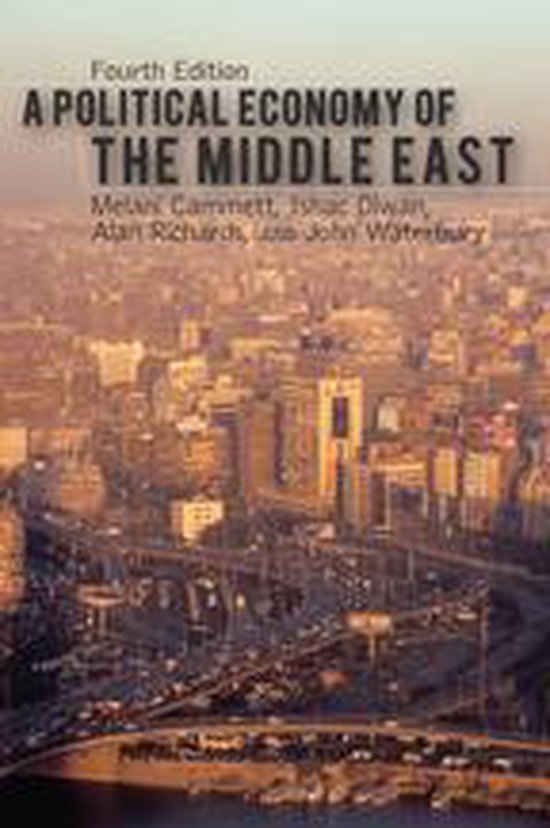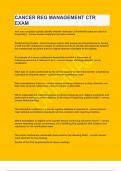Week 1 Lecture 1: Concepts and Themes in the MENA/WANA Economies (12 September)
Hanieh: Chapter 1 Theories and perspectives
Arab spring: al-shaa’b yurid isqat al-nizam. The Middle East has never before witnessed
such an all-encompassing, deeply felt, popular revolt. These regimes reacted with
brutality and killing to these revolts. The West tried to rearrange some form of stable rule
in one of the most strategically significant areas in the world. How? Their standard
military intervention and promises of financial aid. But whatever the outcome of these
revolts may be, the region will never be the same.
One big consequence of these revolts will undoubtedly be the renewed interest they have
awakened in the Middle East’s political economy.
As a consequence of the global economic collapse of 2008, slogans like aish, hurriyah,
adalah ijtimaiyah (bread, freedom, social justice) came to life. The situations experienced
by those living under repressive regimes were the roots of the uprisings.
This book tries to outline some of the most significant transformations of the ME through
the lens of Marxist political economy. It focusses on capitalism and class: two
categories that are often downplayed in the analysis of the economy of the ME.
Approaching the Middle East
We identify two basic categories in terms of political economy of the ME:
1. Al-dawla = the state (various political institutions that stand above society and
govern)
2. Al-mujtama = civil society (non-governmental and non-inheritable institutions)
A feature of the ME, according to many is: ‘the resilience of authoriataranism’, the
existence of states where ‘leaders are not selected through free elections, and a small
group of people who control the state and are not held accountable by the broader
public.’
Some, even divide the different types of authoritarian states into categories.
1= authoritarian monarchies Gulf states, Morocco, Jordan
2= authoritarian republics Egypt, Syria, Algeria, Yemen, Tunisia
3= democratic exceptions Israel
Some say this authoritarian rule exists because of Islam, some other explanations
portray intra-elite division, leaders manipulating different groups in society + the
military. In any case: to understand the ME we must understand the state and civil
society.
Another famous idea is the link between authoritarianism and the weakness of
capitalism. not only are the political and civil rights weak, but the state also interferes
with the operation of a capitalist economy: individuals might be prevented from freely
engaging in market activities, while the state elites are not.
The history of the region is a long-standing struggle between ‘the authoritarian
state’ and ‘economic and political liberalization.’
The narrative usually begins with the emergence from colonialism after WW2. These
independence movements were typically let by militaries of elites, which seized power in
,the postcolonial period and began an era of ‘statism’ or ‘Arab socialism’.
From the 1980’s onwards, these states came under pressure due to the desire for greater
economic and political freedom.
The idea that there was a correlation between economic performance and the degree of
democracy, started to grow. Capitalism was thought to be a force for democracy.
The West’s response to the revolts of 2011 and 2012 was obviously that it was of political
nature and that the problem obviously lay in the authoritarianism. The West believed
that ‘free markets’ would be essential to societies without authoritarianism.
A Marxist Framework of Class and State
This book takes ‘class’ as its basic starting point to comprehend the dynamics of any
society.
Class, according to Marx is ‘an expression of the (geographical) relations that people
form between each other around the process of producing society’s needs.’
This differs from the usual concept of ‘class is a category of income or a group of people
who do the same job.’
From Marx’s viewpoint, ‘the state is not an independent and separate feature of society,
the relationship the ruling class holds with the state is actually part of what defines it as
a class: state and class need to be seen as mutually reinforcing and co-constituted, with
the latter providing the conditions of existence for the former.’
Internationalization of Class and State
Obviously, capitalism acts on an international level: the place where a product is sold is
probably not where it is also produced.
Internationalizations takes place through: establishment of joint ventures, expansion of
foreign investments, companies on overseas stock markets. need for global markets
and banks risks of fluctuations in currencies and interest rates.
The internationalization of capital often (weirdly) means that state formation is
strengthened: state has to protect private property rights, ensure financial conditions,
maintain contract laws etc.
Thus the internationalization of the state develops together with the internationalization
of capital.
We can thus not only study a state itself, we must also study its relationships with other
areas.
The categorization of Arab states (authoritarian republic/authoritarian monarchies etc) is
therefore quite incomplete: it only focusses on the country itself and not on its
relationships with other countries typical comparative method.
Centrality of Imperialism
Imperialism: the tendency of dominant capital to increasingly draw the world market in
on itself.
When this book discusses imperialism, we do not mean colonialism but the ongoing and
essential theme in the shaping of the region’s political economy.
Two important aspects to imperialism in this book:
, 1. The rivalry and unity of interests that characterizes the relationship between two
major imperialist powers. The growing internationalization requires greater coordination
and cooperation between states.
Important to understand in which ways imperialism continues to shape the political
economy of the ME.
2. Imperialism is primarily a question of exploitation (forms of economic domination).
Neoliberalism
Main focus: neoliberal phase of capitalism roots in the global crisis of the 1970s, was
consolidated during the 80’s and continues until today.
Neoliberalism’s policies: privatization, reduction of capital flows etc.
The widespread adoption of neoliberal policies was due to the restructuring of the world
market (1980/1990).
Neoliberalism is an economic philosophy that conceptually describes a move
towards free markets, capitalism, and a diversion from government ownership.
The typical policies associated with neoliberalism include, globalization, privatization, and
changes in government spending to stimulate the private sector.
Cammett Chapter 1: Introduction and framework of the study
The ‘Arab uprisings’ began on December 17 2010 in Tunisia: Mohamed Bouazizi (a
vegetable seller) set himself on fire as a protest against the injustice workers faced
later all type of people added themselves in the protests.
What was the reasons of the uprisings ? A combination of political frustrations ánd
economical ones > there was a perceived rise of inequality of opportunities.
The Arab uprisings of 2011: How did we get there?
Why did the uprisings occur at the end of 2010, when there were no apparent and direct
triggers such as declines in subsidies or shifts in foreign alliances? Moreover, many
countries like Tunisia and Egypt even faced economic growth, even though they had
obviously had been hit in earlier years during the 2008 global crisis.
We argue in this book that: discontent on the economic front interacted with a broader
sociopolitical context to ignite the uprisings. In particular: economic stagnation mixed
with the perceived rise in inequalities and lack of social justice.
It was in the mid-1980’s that an elite capitalistic class was enabled to benefit from
personal connections and have more access to opportunities. This means, that the older
generation had seen better times (more honest times), which could explain why they
even more wanted to shut these unfair governments down.
Cross-regional variation in the Arab uprisings






